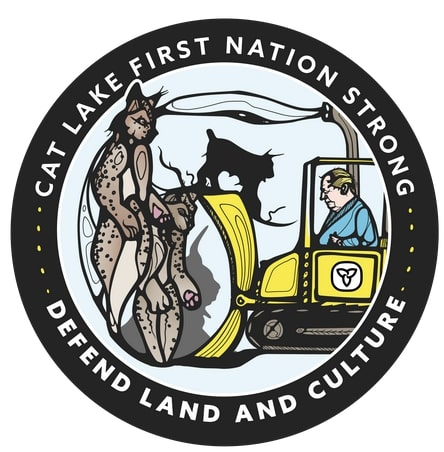Support strong Canadian climate journalism for 2025
Cat Lake First Nation has won an injunction against a provincially approved winter road project that would lead to a proposed gold mine in northern Ontario.
Chief Russell Wesley told reporters at a press conference at Queen’s Park on Tuesday that the permit Ontario signed for the winter road “significantly destabilized the situation” between the project proponent, First Mining, and his community.
He told Canada’s National Observer that Cat Lake put a moratorium on mining activity on its territory. When Ontario filed the permits, it showed a complete disregard for the moratorium Wesley said was needed for proper consultation on the gold mine, which sits in an environmentally and culturally sensitive area.
In an interview with Canada’s National Observer, Wesley reiterated that Cat Lake is not opposed to mining development. For example, the community has signed mining and revenue-sharing agreements in the past.
However, Wesley noted the community is only willing to talk about development if the consultation is fair. Wesley is zeroing in on how Ontario has failed every step of the way as a treaty partner, essentially abdicating its duty to consult and putting the onus of consultation on industry and First Nations.
He sees the consultation period of 120 days as a box-ticking exercise, consisting of phone calls and emails with the province. Not once has a ministry representative stepped foot in Cat Lake to consult the community about the Springpole mine project, he added.
It’s a problem given the several social crises First Nations deal with in their communities, Wesley said. Wesley looks at the crisis caused after his community’s nursing station burned down last weekend.

He says if that fire happened during the consultation process, everything would have to be dropped over the state of emergency while the clock on the consultation period ticked.
Wesley is also frustrated with government bureaucracy, noting that messages take a month to get through a junior bureaucrat to a minister.
It’s gotten to the point where Wesley refuses to speak to anyone in Doug Ford’s government who doesn’t have decision-making power.
It’s a systemic problem Wesley thinks Queen’s Park needs to reform, and it’s a situation that will just get worse as the North continues to develop.
“It puts First Nations and industry … into media spotlights like this where they're fighting it out, and that's grossly unfair,” he said.
Now, the injunction is in place until November, Wesley said at the press conference. Until then, Cat Lake will wait and reapply for another injunction until the Anishnaabe-led environmental assessment is predicted to finish around March 2025.
Wesley told Canada’s National Observer previously that the territory where the mine is proposed is a key harvesting area, with traplines, high-traffic moose-hunting grounds and a lake that contains trout and used by many of the 600 Cat Lake community members.

There are also worries that cofferdams, used to control the water in the pit area of the mine, will move and disturb trout habitat in Springpole Lake and prevent harvesting.
“The First Nation has to have that ability to take a really serious look to see if [the project] is sustainable,” Wesley said in a previous interview. “Although those things are stacked against it.”
There are also worries about the lifespan of the mine, which is about 11.3 years. It’s a short time frame given the mine will have a depth equal to the Empire State Building.
When a reporter asked why the Anishnaabe-led environmental assessment would take so long, Wesley replied, “because when you're talking about draining a lake or removing X square miles of land from hunting, fishing and treaty rights, that consultation takes a while longer — you’re removing that area for at least 100 years.”

On Tuesday, it was also announced Marten Falls and Webequie First Nations signed community infrastructure agreements, marking an advancement to the contentious all-season road to the Ring of Fire mining region.
The announcements were made to correspond with the Prospectors & Developers Association of Canada’s annual conference, which is self-claimed as the “world’s premier mining conference.” Over 70 per cent of the world’s mining companies are based in Canada.
Matteo Cimellaro / Canada’s National Observer / Local Journalism Initiative




Comments